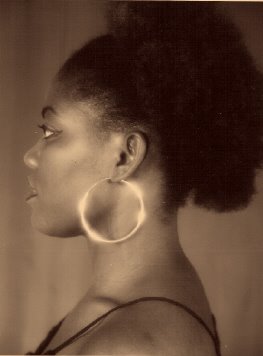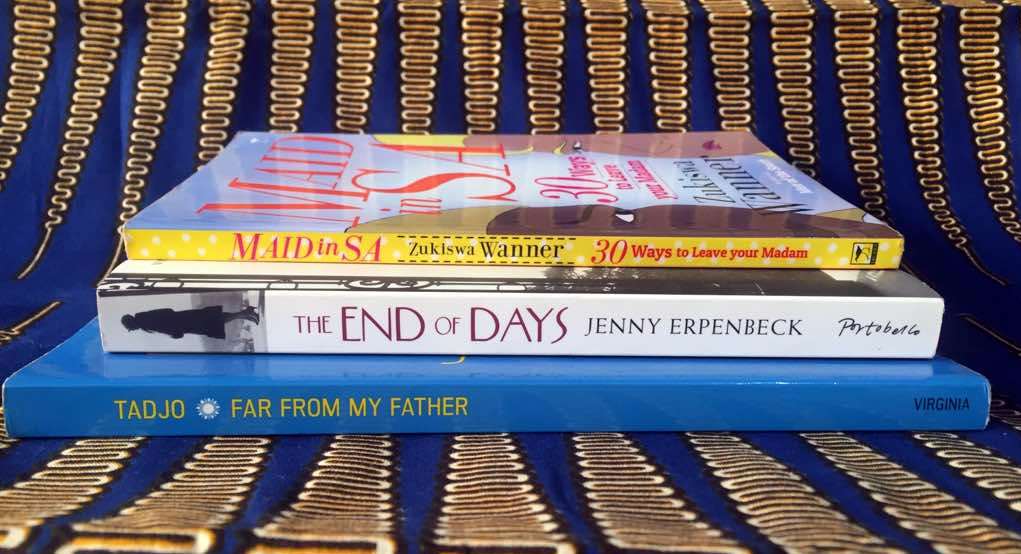
Ndidi Dike in conversation with Bisi Silva
 Bisi Silva: I remember briefly discussing a few years ago the issues that you were working on outside of your wall sculpture pieces. You mentioned that for nearly a decade you had been collecting objects associated with slavery. What is the background to this interest?
Bisi Silva: I remember briefly discussing a few years ago the issues that you were working on outside of your wall sculpture pieces. You mentioned that for nearly a decade you had been collecting objects associated with slavery. What is the background to this interest?.
Ndidi Dike: As an artist I constantly troll different environments for new ideas and media that can be used to develop my work. Sometimes these ideas can percolate in my subconscious for years, until an opportunity arises to actualise them. Around 1999 I started collecting different types of manilla and related objects, then I moved on to making my own version of branded stamps reminiscent of those used to brand slaves as pr
 operty or chattel. I also noticed there existed little or no discourse or documentation on Nigerian Slave ports despite its centrality to the slave trade.
operty or chattel. I also noticed there existed little or no discourse or documentation on Nigerian Slave ports despite its centrality to the slave trade..
I visited Badagry in 2002 to see the slave route through which large numbers of our people were taken to the Americas to work daily, for long hours on plantations under subhuman conditions. During that visit, I knew I was standing face to face with history. Yet, much as I wanted to go back sooner, it only happened in 2007 at which point I knew I wanted to capture in a dramatic visual form, this cataclysmic episode in human history. No-one can visit Badagry without being
 moved by this ignoble part of our history or by the consquences of man’s inhumanity.
moved by this ignoble part of our history or by the consquences of man’s inhumanity..
BS: There are few artists in Nigeria I know of who have taken slavery as a subject matter so directly in their
 work as you have done in Waka-Into-Bondage. Can you talk about the genesis of this project.
work as you have done in Waka-Into-Bondage. Can you talk about the genesis of this project..
ND: The project comes out of my life’s experiences of which 3 are the most relevant. The visits to Badagry in 2002 and 2007 were the catalyst for Waka-into- Bondage. Secondly, tertiary education at the University of Nigeria, Nsukka was important in developing my African consciousness. Founded at the twilight of colonial rule by Nigeria’s first president, Dr Nnamdi Azikiwe in 1960, he was resolute in his quest for the black person to occupy a pride of place in the global community after a long history of oppression. As a student at Nsukka I was introduced to the works of great writers such Prof Chinua Achebe and taught by influential artists and art historians such as
 Professors Uche Okeke, Chike Aniakor, Obiora Udechukwu.
Professors Uche Okeke, Chike Aniakor, Obiora Udechukwu..
Lastly, my formative years were spent in the United Kingdom. This inevitably made me more conscious, more aware of my African heritage at an earlier age
 . I became interested in African history and culture and there were many things my contemporaries who grew up in Nigeria took for granted which I could not.
. I became interested in African history and culture and there were many things my contemporaries who grew up in Nigeria took for granted which I could not..
BS: The Waka-Into-Bondage project is a move from the traditional sculpture and paintings for which you are well known. This sculptural installation is one of your first forays into a
 more conceptual way of working. How does this new direction expand on your work?
more conceptual way of working. How does this new direction expand on your work?.
ND: I have been working for a while in relief and two-dimensional format. As one constantly explores new ideas, different aesthetic representations are formed. I felt this project would be better articulated in a different format than I normally used and a more conceptual format was the most appropriate. It allows for experimentation in a way that the two dimension could not. For example in my recent sculptures such as Dwellings, Doors and Windows (2008)I appropriate harbour pallets, break them down and reconfigure them in a way that evokes traces of the voyage. The blood represents what was shed before, during and after transatlantic trade but also what continues to be shed today. The photographic montage include images I took at Bad
 agry, documentary images and other found images symbolising a continuum of slavery past and the rise in contemporary forms of bondage and exploitation.
agry, documentary images and other found images symbolising a continuum of slavery past and the rise in contemporary forms of bondage and exploitation..
BS: I remain shocked that Nigeria and Lagos where some of the largest numbers of slaves were taken from its shores neglected to commemorate 200 years of the abolition of slave trading in 2007. It neither featured in the State or the country at
 large’s cultural, historical or educational calendar. Why do you think there was this monumental omission?
large’s cultural, historical or educational calendar. Why do you think there was this monumental omission?.
ND: You are right to observe that the anniversary did not feature in any cultural or educational calendar. I guess it comes down to our notorious collective amnesia. But one thing is certain: if Chief Moshood Abiola, the famous Nigerian businessman, philanthropist, pan Africanist and politician who began the campaign for the payment of reparations to African nations for three centuries of slavery, colonialism and imperialism had been alive, I am certain that it would have been marked in a noticea
 bly manner in Nigeria and other parts of Africa. Chief Abiola deployed stupendous financial, media, literary and intellectual resources towards this campaign.
bly manner in Nigeria and other parts of Africa. Chief Abiola deployed stupendous financial, media, literary and intellectual resources towards this campaign..
BS: Whilst the slave trade was legally abolished 200 yrs –– slavery in its contemporary form seems to be on the rise. We see in the media everyday stories about human trafficking of women and children, forced child labour, sex slavery among others. Is this an aspect reflected in your research and your work?
.
ND: As I stated earlier, slave trading may have been abolished by the British parliament 200 years ago, but it is still in practice in certain countries. There are so many countries where the condition of the Black people leaves much to be desired. These new forms of slavery are not yet captured in the current works. I hope to reflect them soon in another set of works.
.
BS: It seems our amnesia is almost total not only in Nigeria but in most countries in Africa. How can we begin to build our present or our future without a critical evaluation of the past?
.
 ND: I often wondered whether much has changed in Africa in 200 years. I am referring to the worldview of African rulers. Our rulers played a vital part in the Trans Atlantic Slave Trade. They supplied the white slave merchants even after the abolition of slave trading. So many wars were fought for so long in the desperate attempt to procure slaves. All this was to satisfy the greed and vanity of many African rulers who were in turn rewarded with mirrors, gunpowder, alcohol.
ND: I often wondered whether much has changed in Africa in 200 years. I am referring to the worldview of African rulers. Our rulers played a vital part in the Trans Atlantic Slave Trade. They supplied the white slave merchants even after the abolition of slave trading. So many wars were fought for so long in the desperate attempt to procure slaves. All this was to satisfy the greed and vanity of many African rulers who were in turn rewarded with mirrors, gunpowder, alcohol..
It is ironic that we continue to bemoan the slave trade because among other factors, an enormous amount of African resources in the form of human capital was transferred abroad and was used to develop overseas countries to the detriment of our own societies. However this trend continues. African resources continue to be used to develop other countries but the African continent. In Nigeria since the return of democratic rule, state governors seem to be competing among themselves over the purchase of properties in pla
 ces like London, Paris, Cape Town and Potomac Park.
ces like London, Paris, Cape Town and Potomac Park..
Barely a hundred years after the infamous Berlin Conference in 1884 which saw the African continent cut up like a piece of cake, in the 21st century. With China, India and the West insatiable thirst for the continent’s abundant energy resources, it looks like the world is set for another scramble for Africa. Once again African rulers are too enthusiastic to exchange the wellbeing of their people for petrodollars. I fear that few lasting change will occur without cognisance of the past.
- Ndidi Dike was in conversation with Bisi Silva at the Centre for Contemporary Art, Lagos, on Saturday 23rd February, 2008.
.
- Words & Exhibition images courtesy of the artist.
.
Waka-into-Bondage is on display @ The Centre for Contemporary Art, 9 McEwen Street, Sabo, Lagos - until 9th March.
- Photo of Ndidi Dike & Bisi Silva © Amaize Ojeikere.










.jpg)





1 comment:
I have returned to click on these images of the artworks so many time. Powerful stuff, this.
Post a Comment